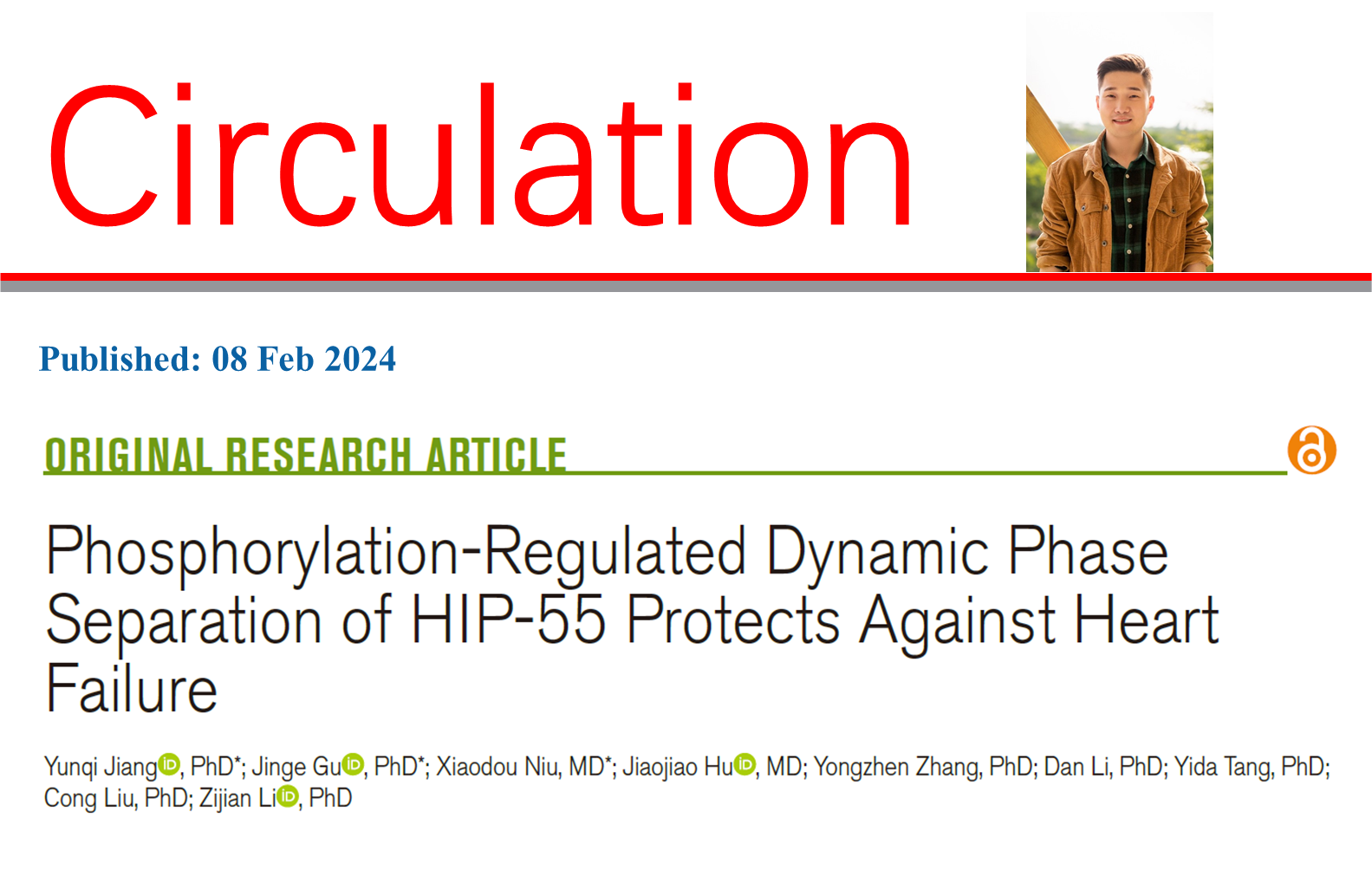Congratulations to Jinge Gu for publishing their work in Circulation!

Abstract:
Background: Heart failure (HF), which is the terminal stage of many cardiovascular diseases, is associated with low survival rates and a severe financial burden. The mechanisms, especially the molecular mechanism combined with new theories, underlying the pathogenesis of HF remain elusive. We demonstrate that phosphorylation-regulated dynamic liquid-liquid phase separation of HIP-55 (hematopoietic progenitor kinase 1-interacting protein of 55 kDa) protects against HF.
Methods: Fluorescence recovery after photobleaching assay, differential interference contrast analysis, pull-down assay, immunofluorescence, and immunohistochemical analysis were used to investigate the liquid-liquid phase separation capacity of HIP-55 and its dynamic regulation in vivo and in vitro. Mice with genetic deletion of HIP-55 and mice with cardiac-specific overexpression of HIP-55 were used to examine the role of HIP-55 on β-adrenergic receptor hyperactivation-induced HF. Mutation analysis and mice with specific phospho-resistant site mutagenesis were used to identify the role of phosphorylation-regulated dynamic liquid-liquid phase separation of HIP-55 in HF.
Results: Genetic deletion of HIP-55 aggravated HF, whereas cardiac-specific overexpression of HIP-55 significantly alleviated HF in vivo. HIP-55 possesses a strong capacity for phase separation. Phase separation of HIP-55 is dynamically regulated by AKT-mediated phosphorylation at S269 and T291 sites, failure of which leads to impairment of HIP-55 dynamic phase separation by formation of abnormal aggregation. Prolonged sympathetic hyperactivation stress induced decreased phosphorylation of HIP-55 S269 and T291, dysregulated phase separation, and subsequent aggregate formation of HIP55. Moreover, we demonstrated the important role of dynamic phase separation of HIP-55 in inhibiting hyperactivation of the β-adrenergic receptor-mediated P38/MAPK (mitogen-activated protein kinase) signaling pathway. A phosphorylation-deficient HIP-55 mutation, which undergoes massive phase separation and forms insoluble aggregates, loses the protective activity against HF.
Conclusions: Our work reveals that the phosphorylation-regulated dynamic phase separation of HIP-55 protects against sympathetic/adrenergic system-mediated heart failure.
沪ICP备2022014231号-1


